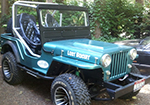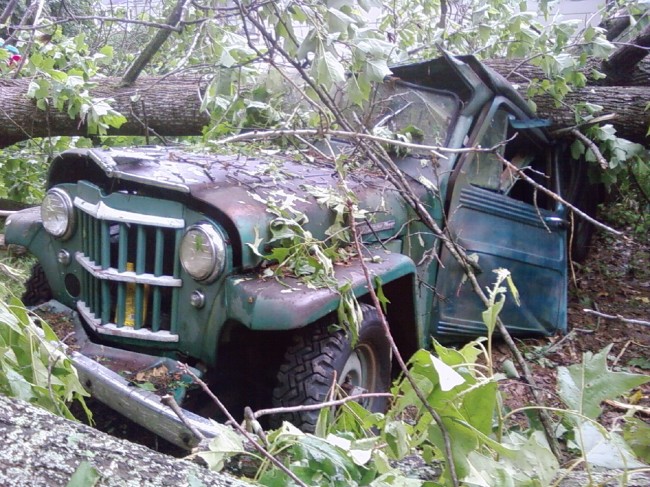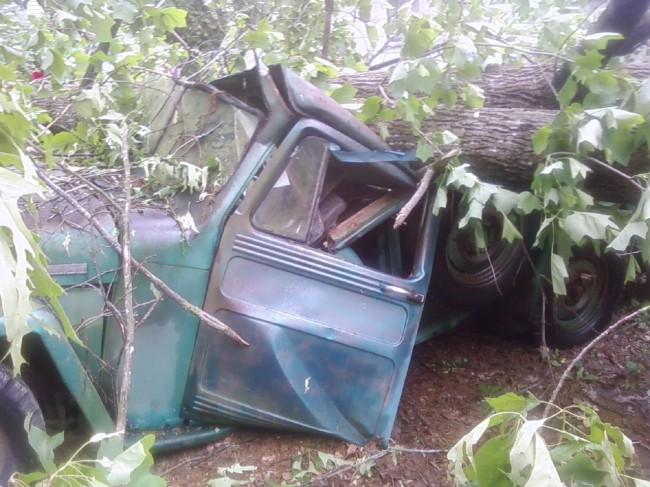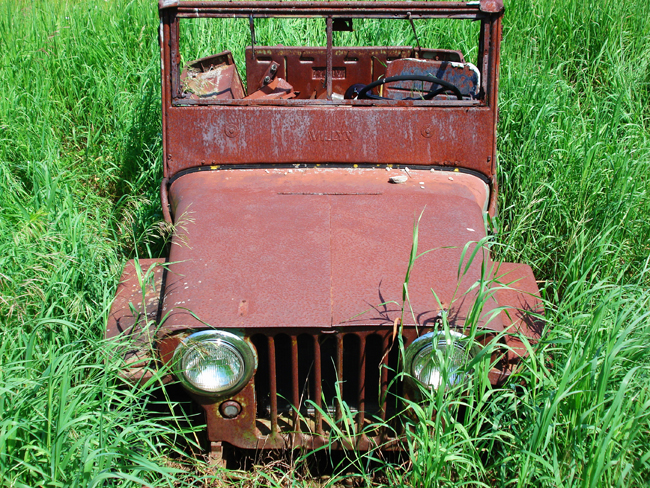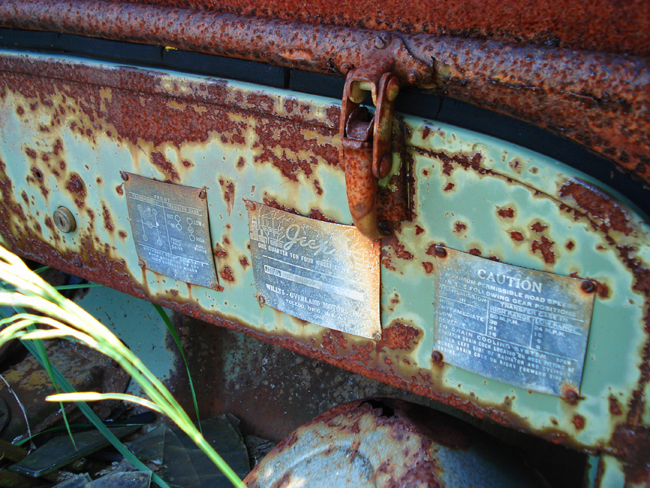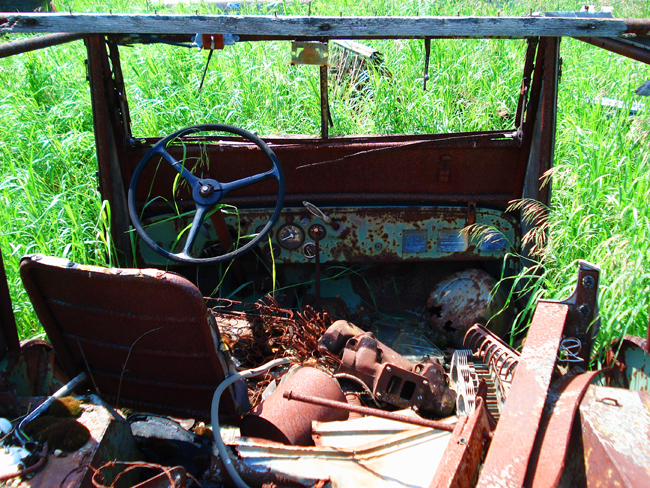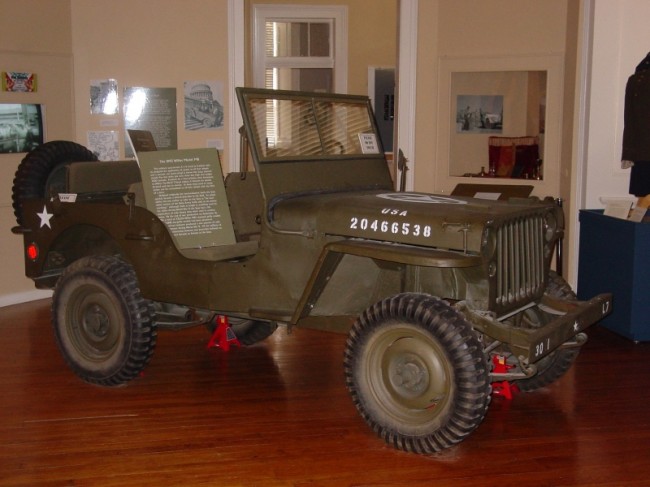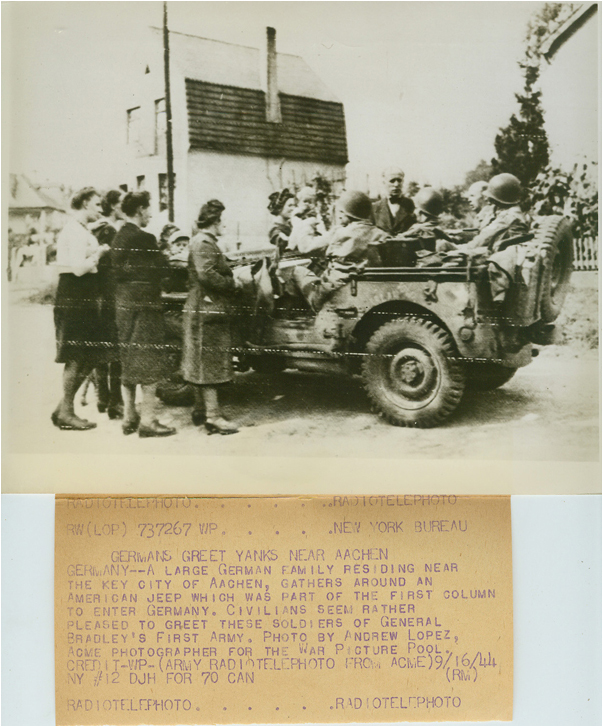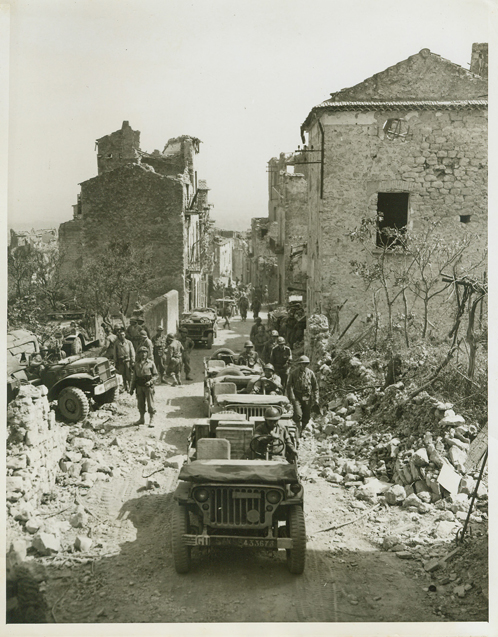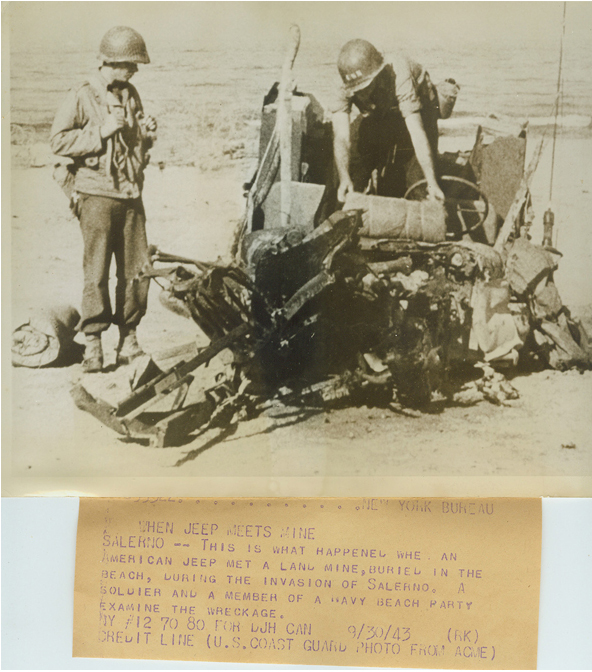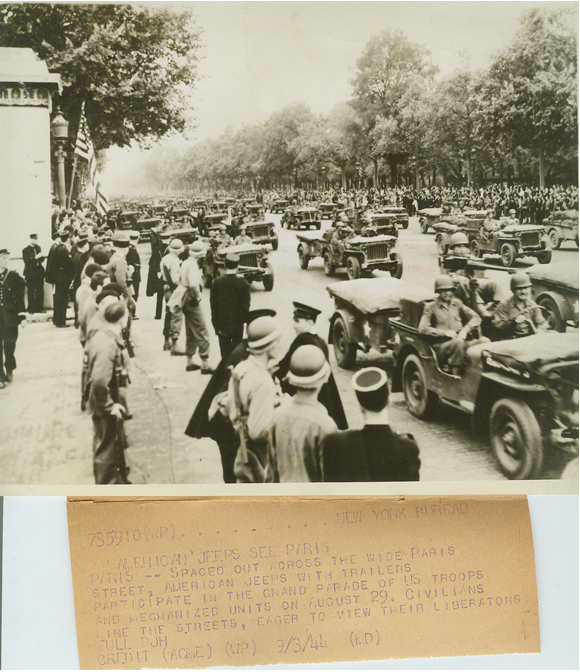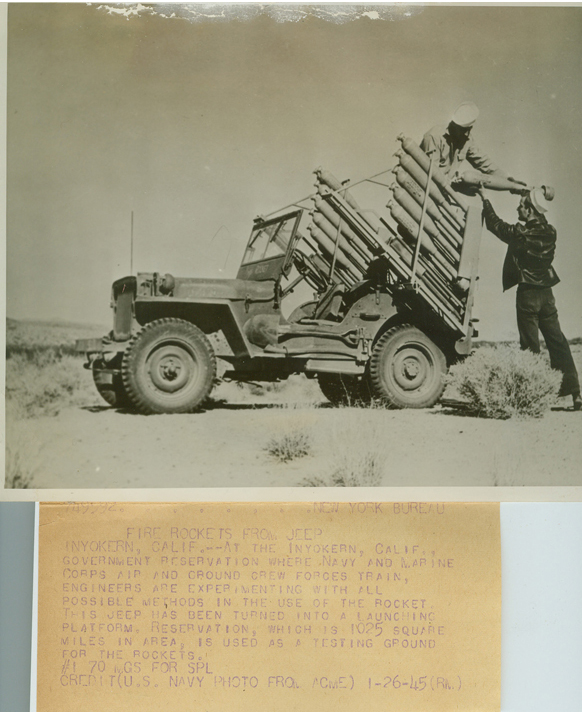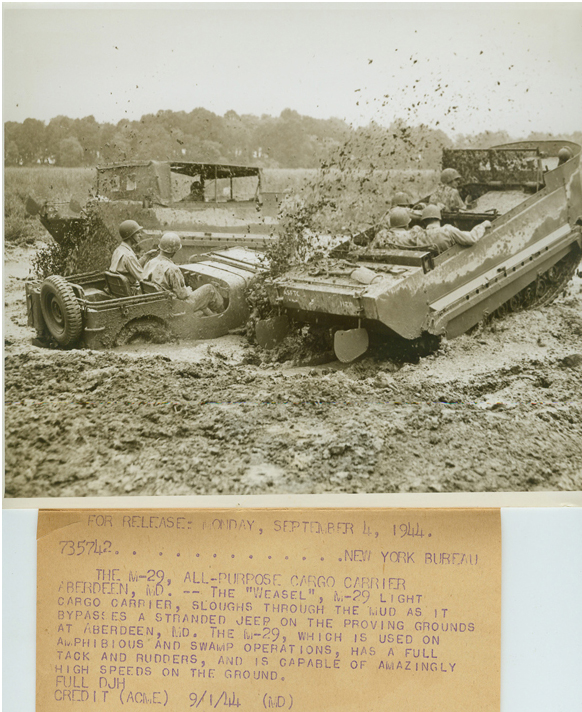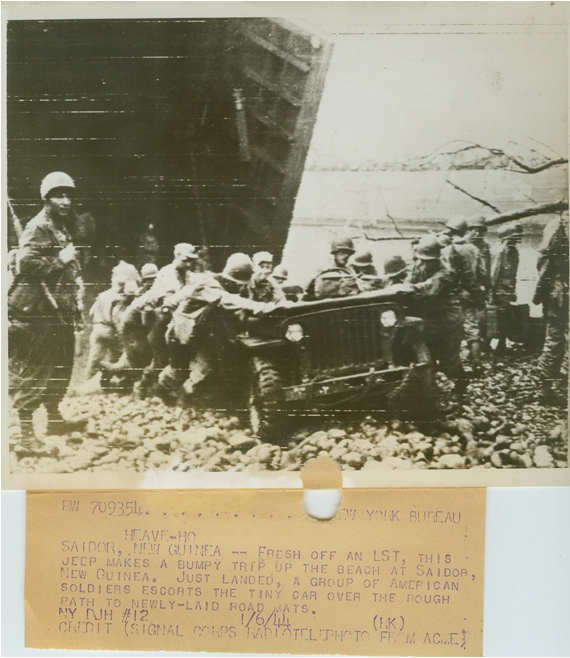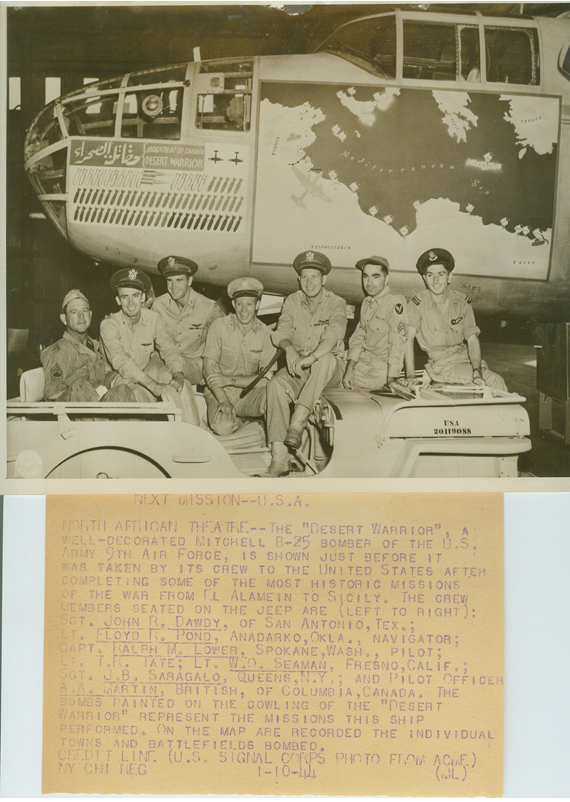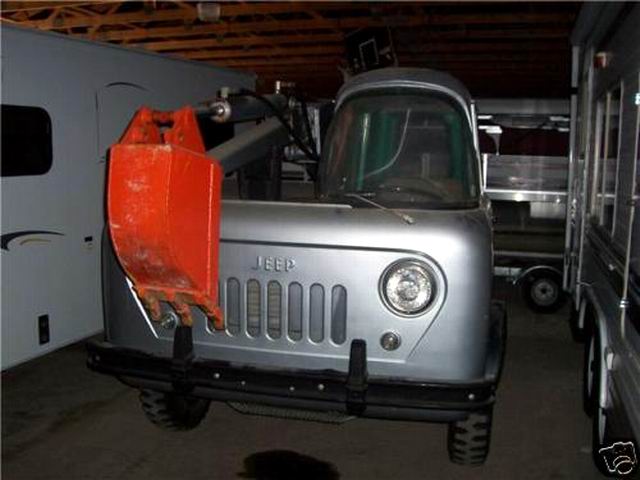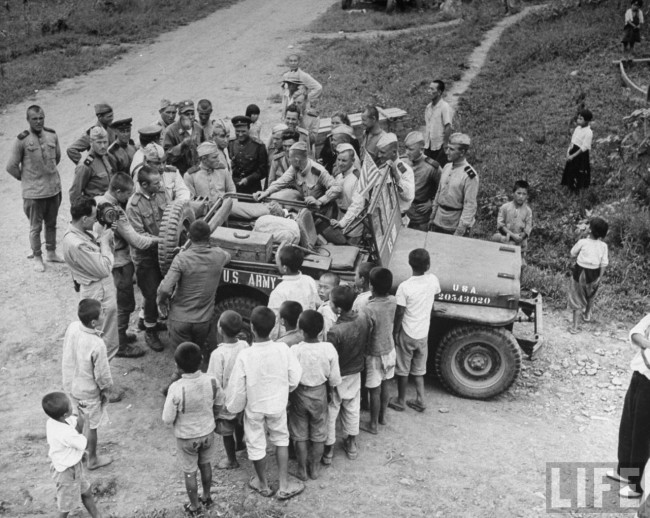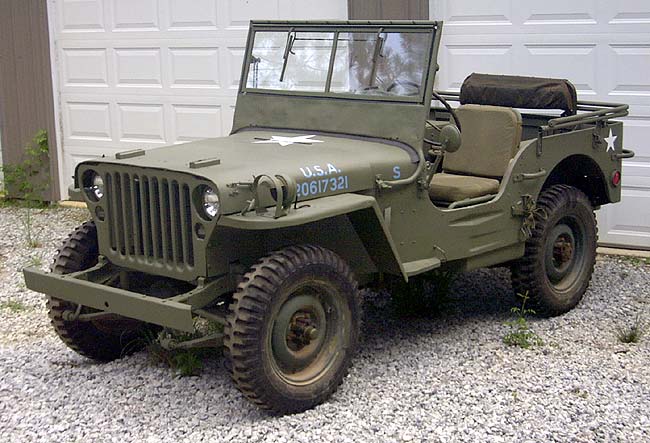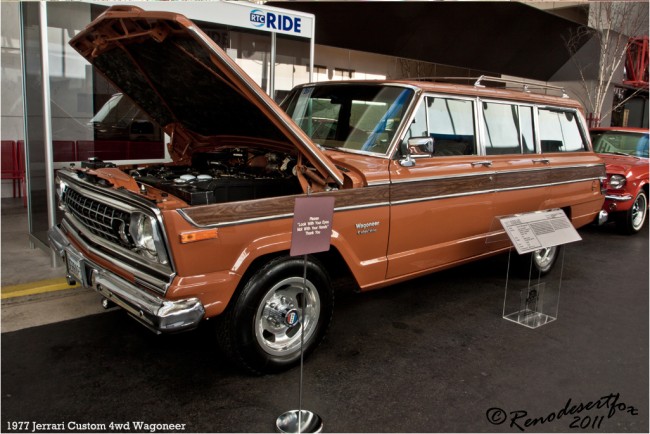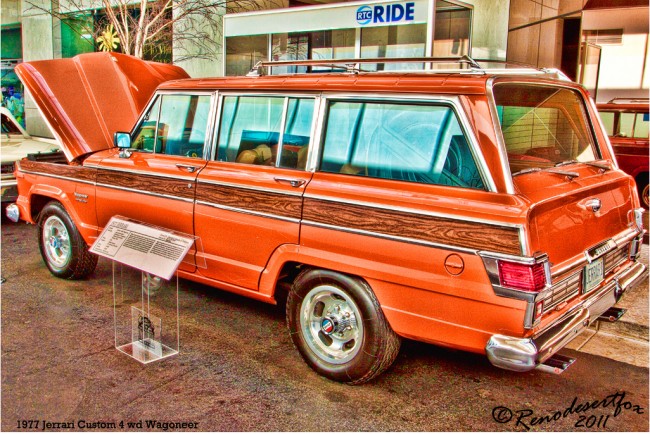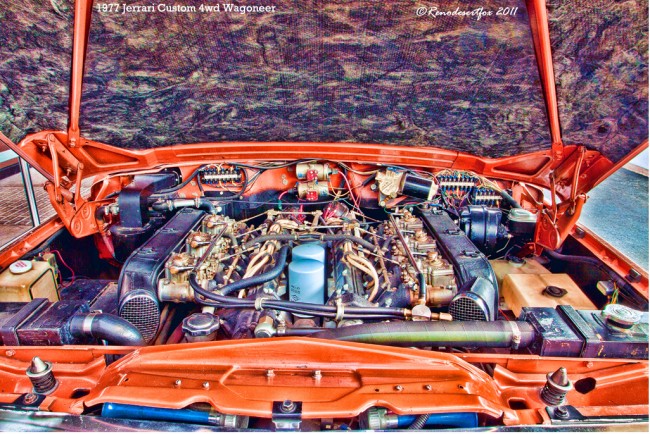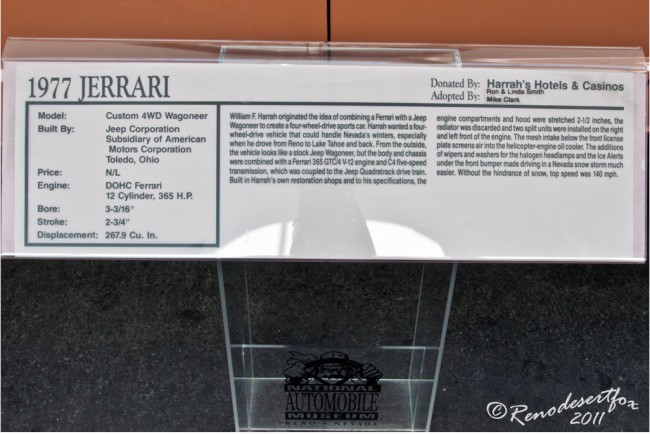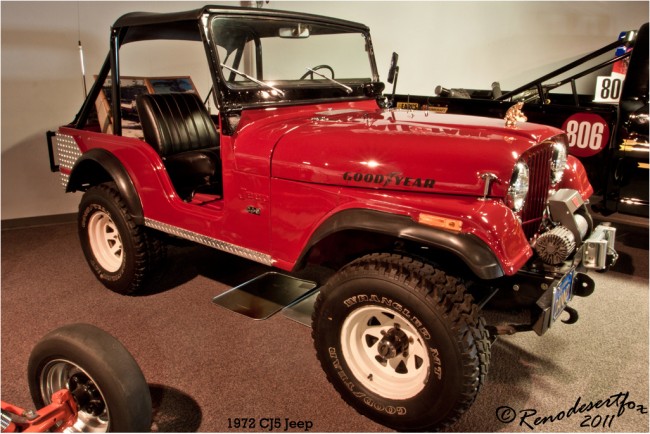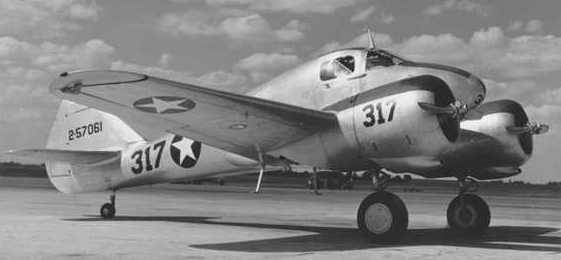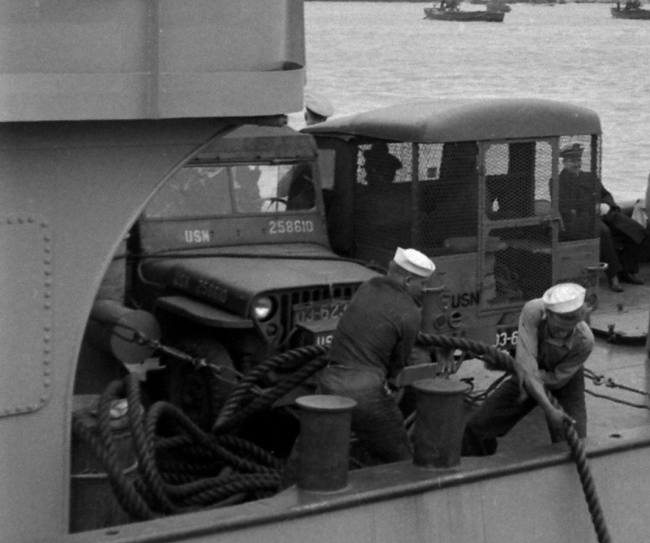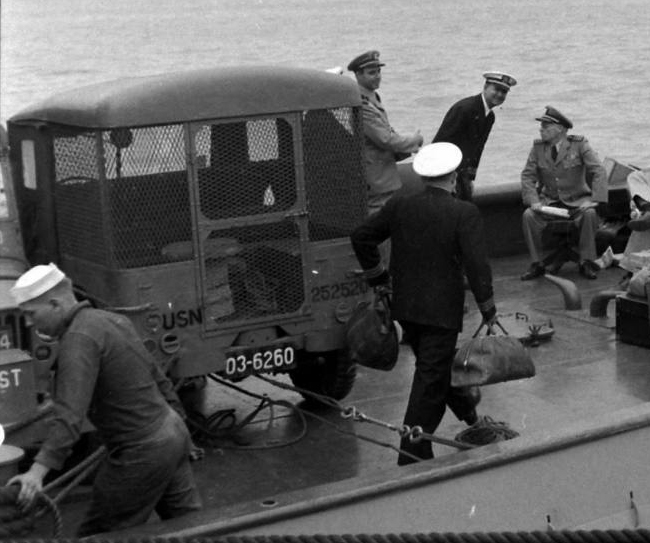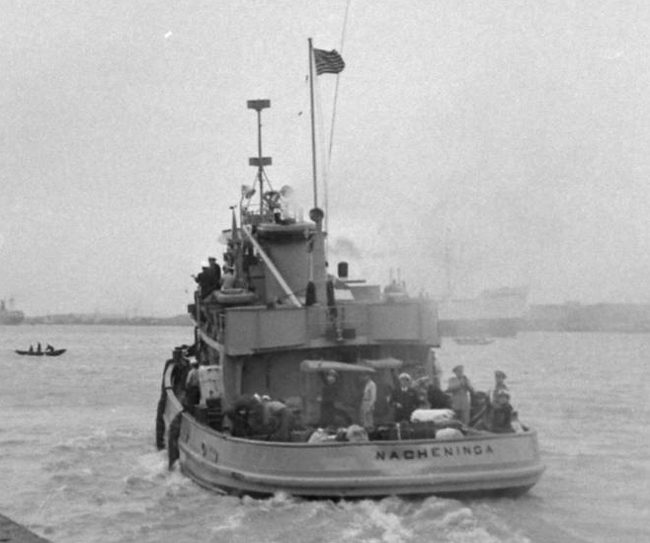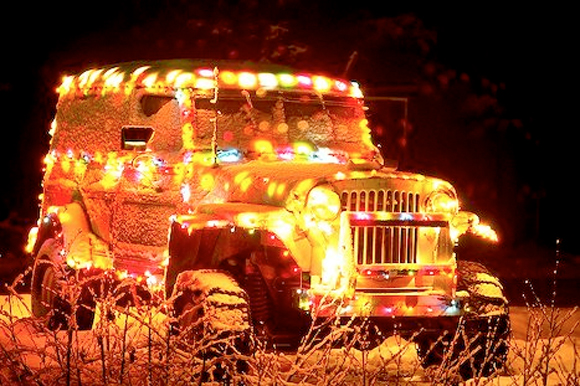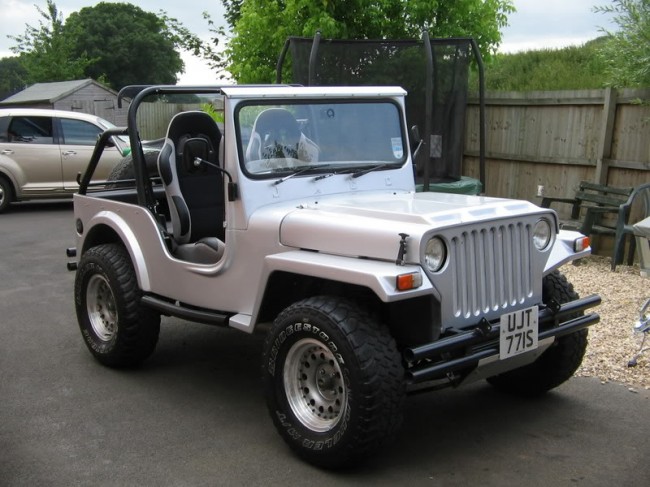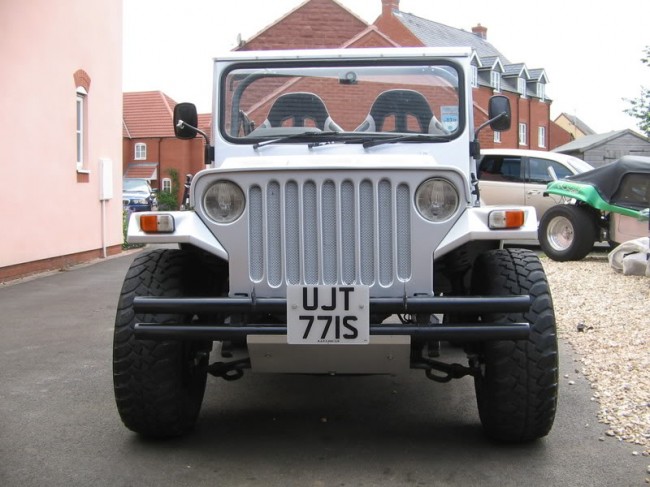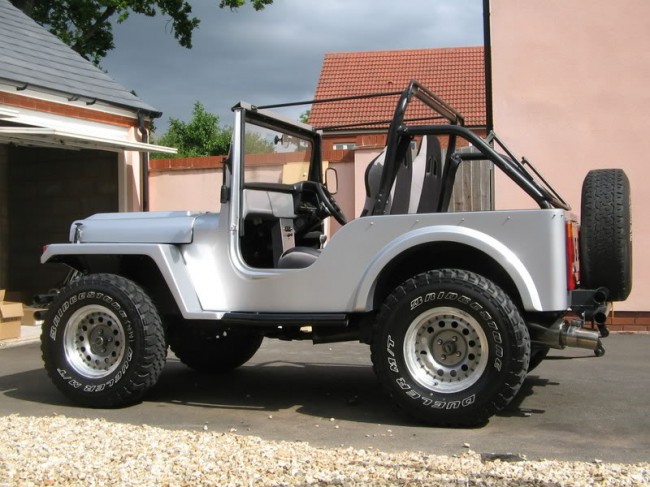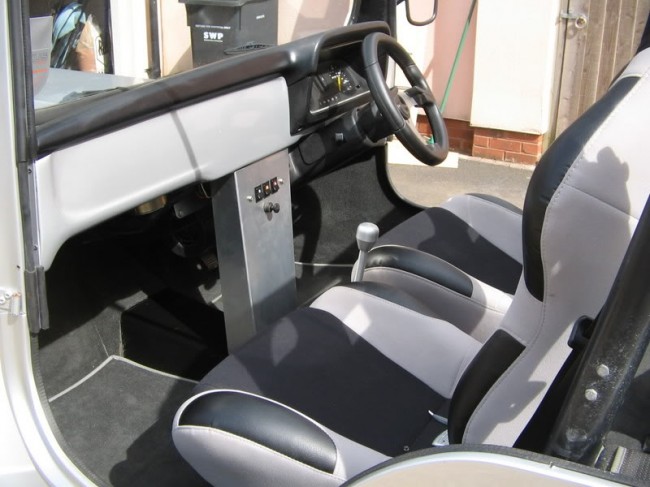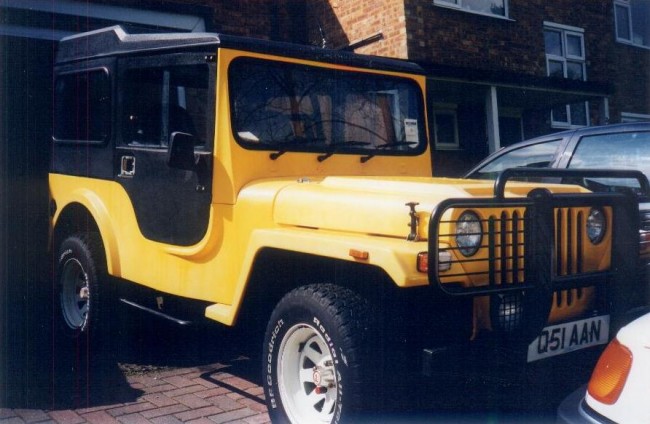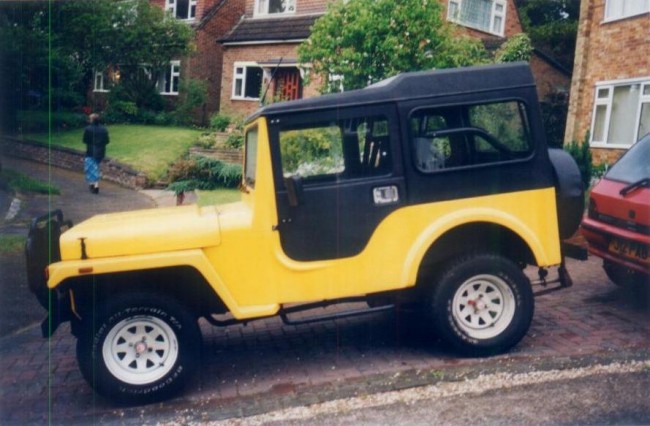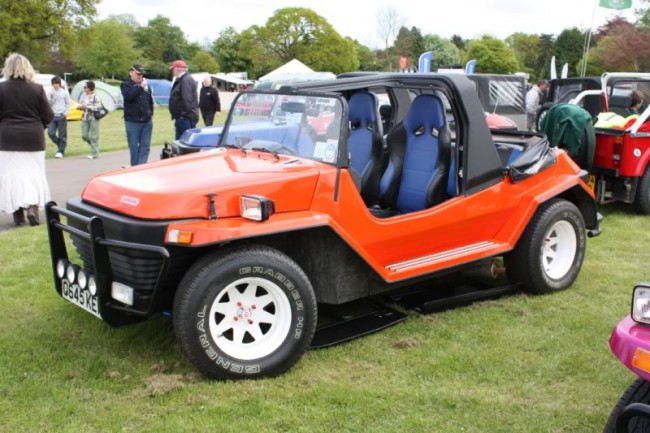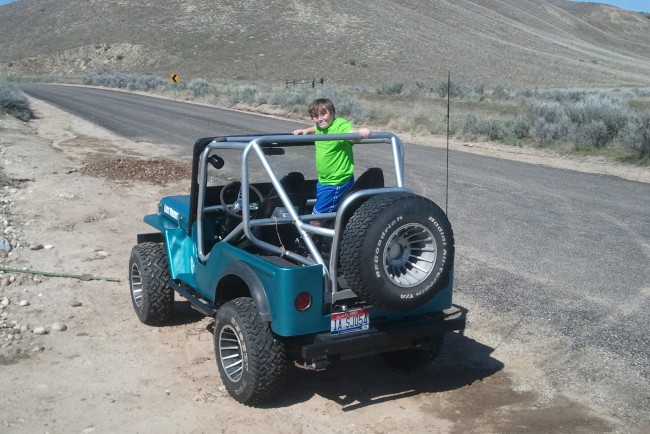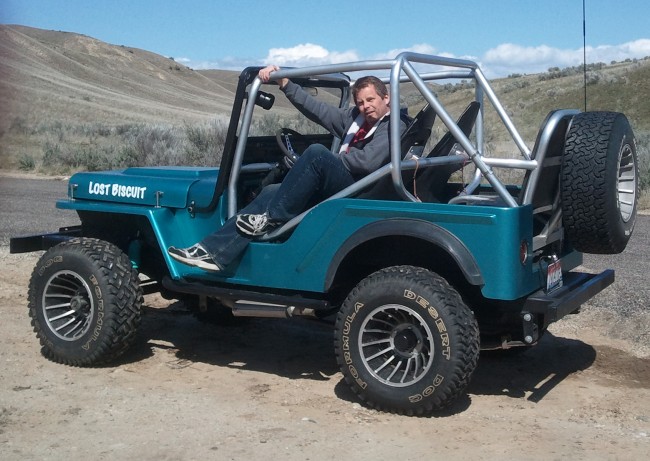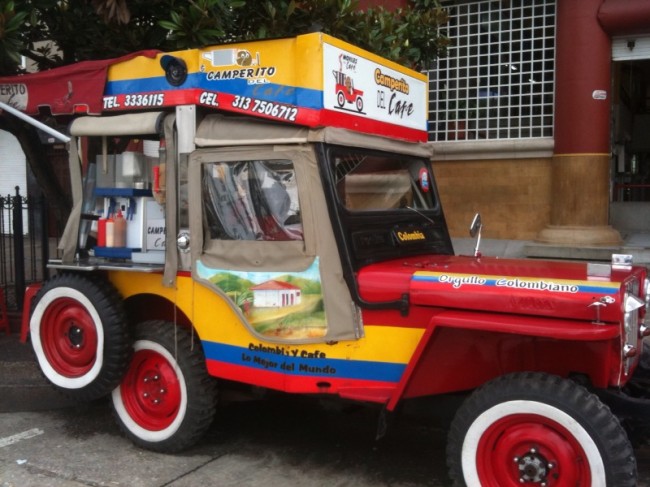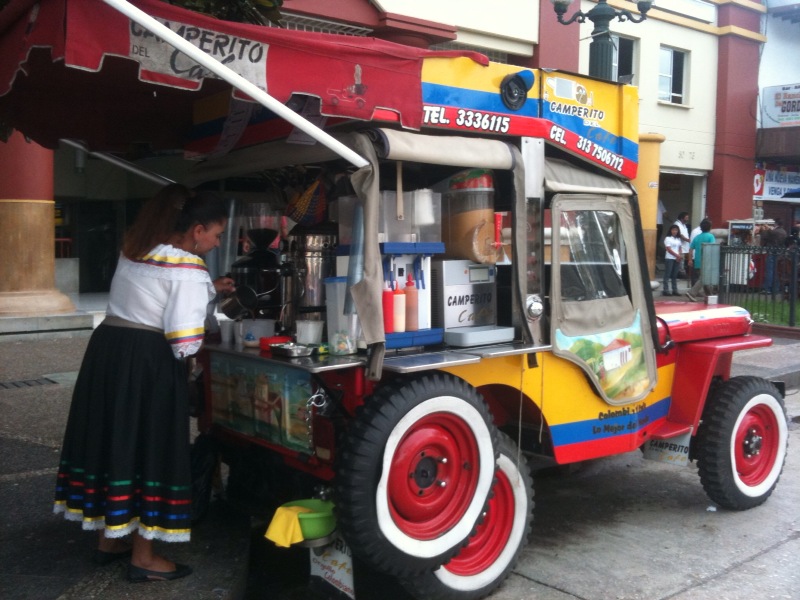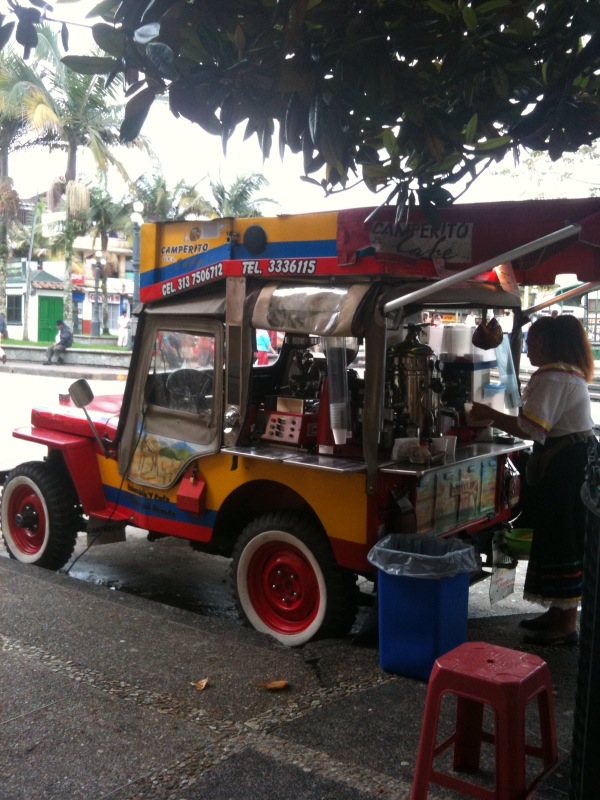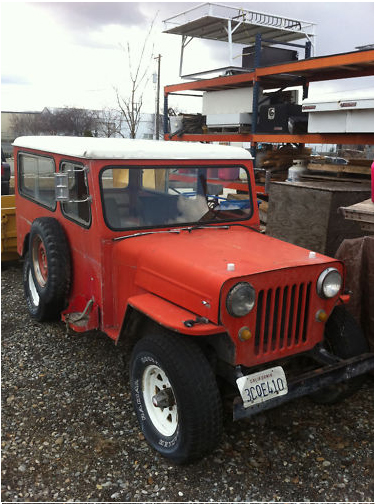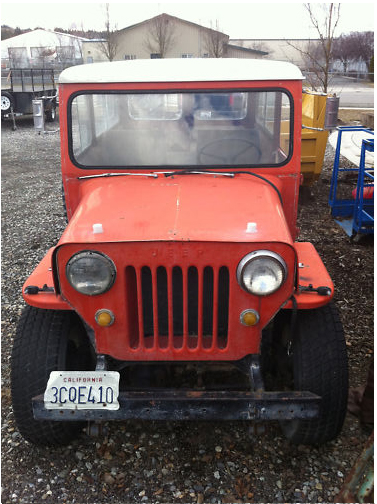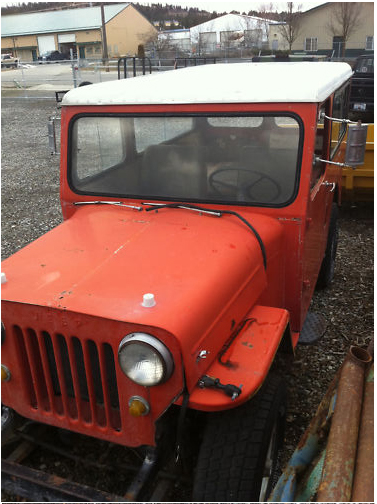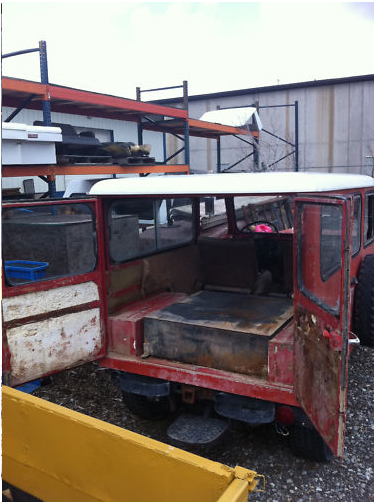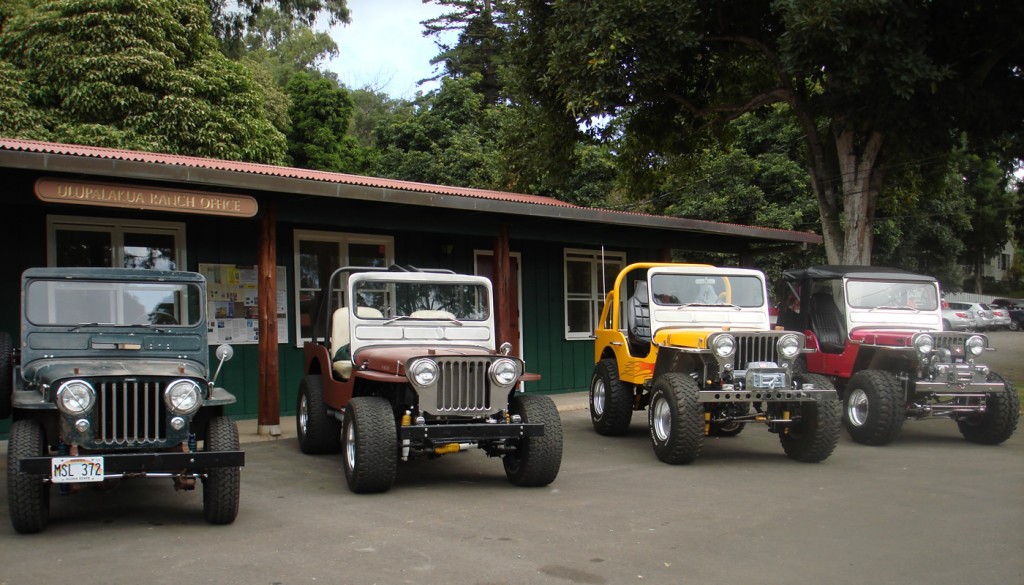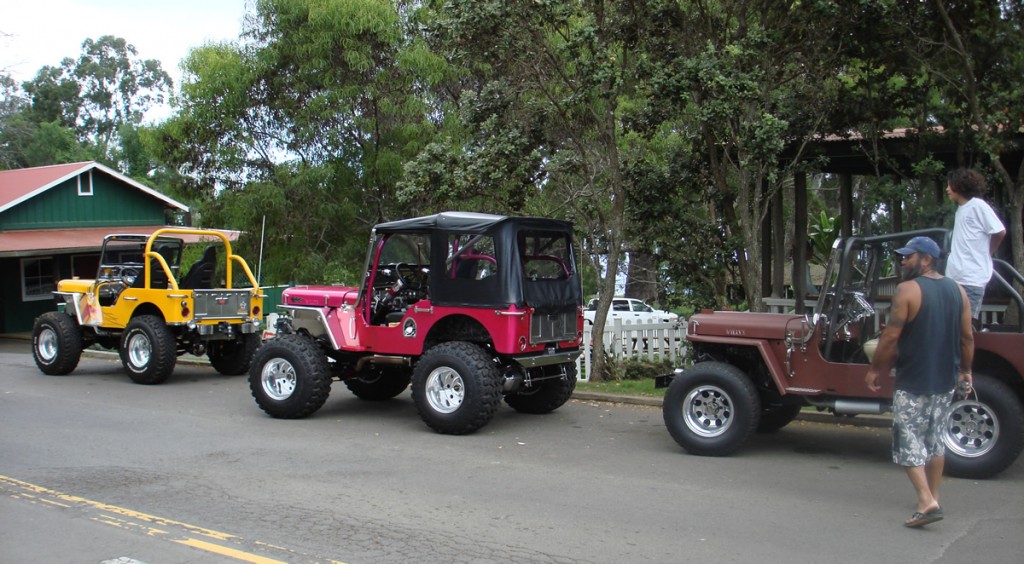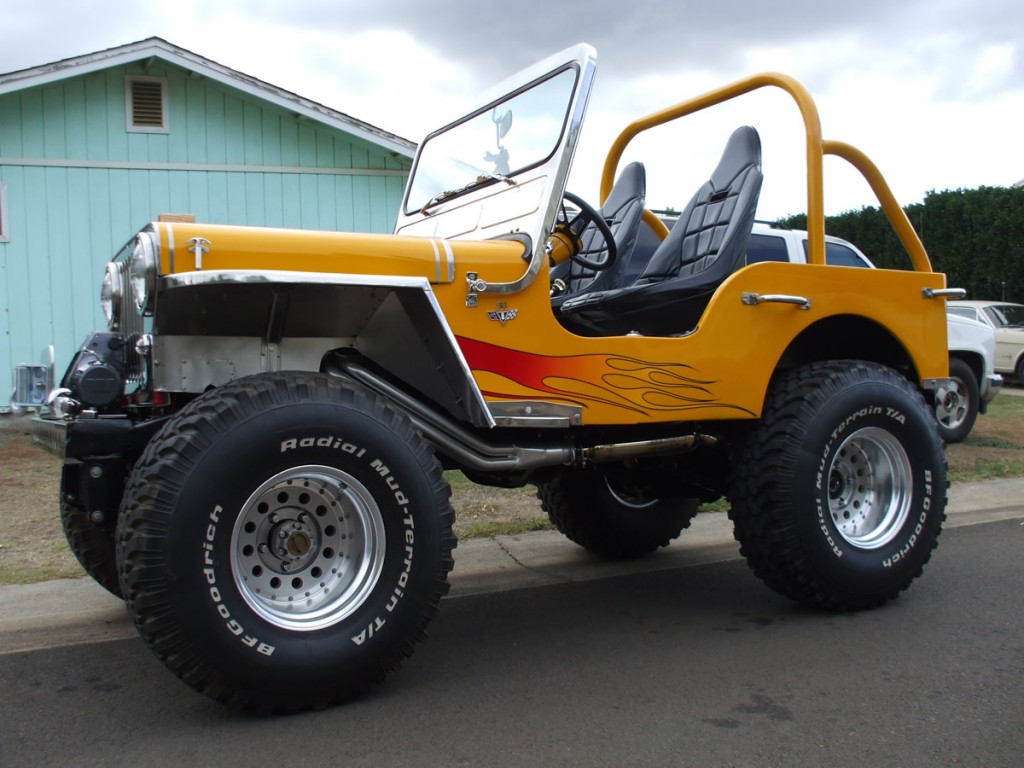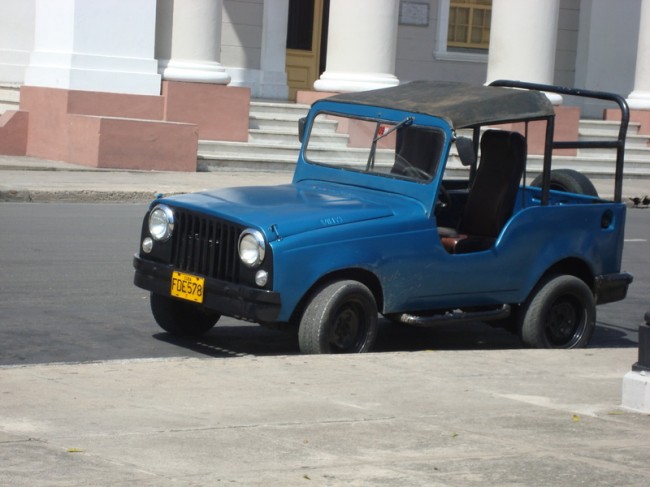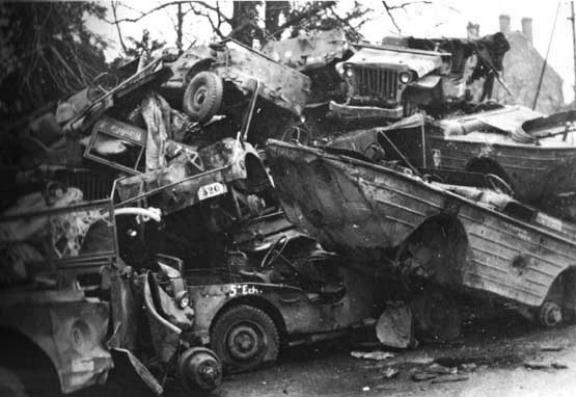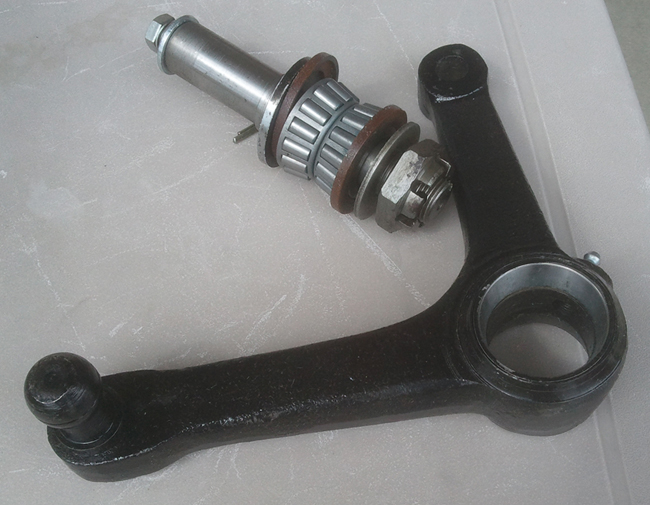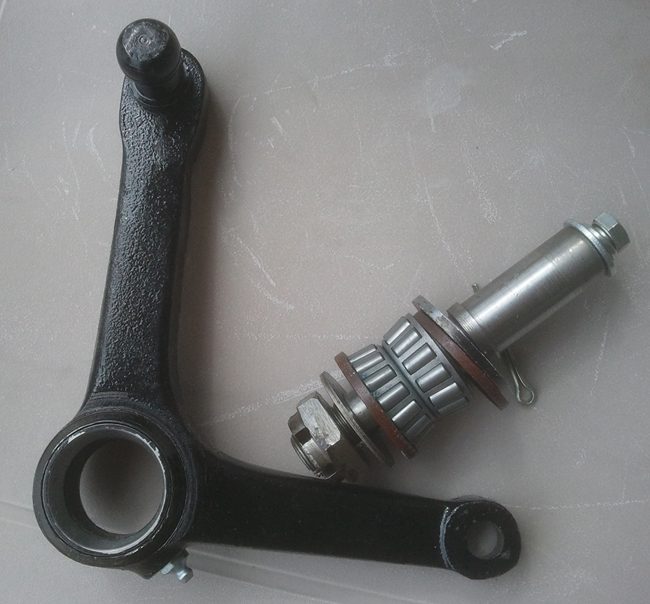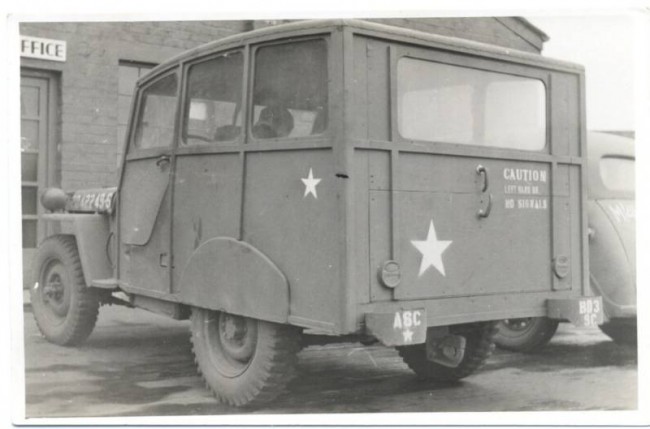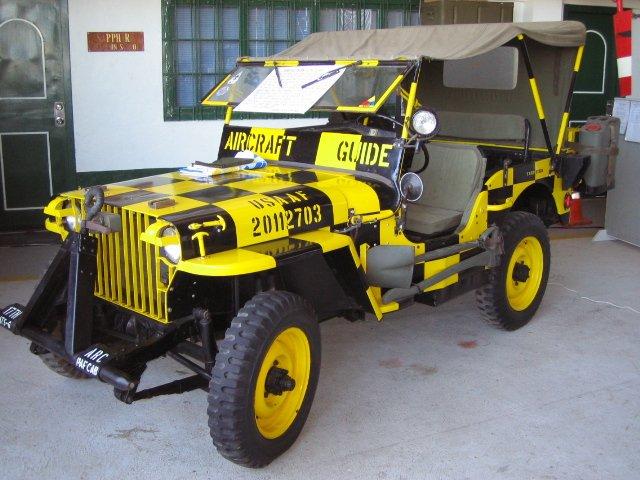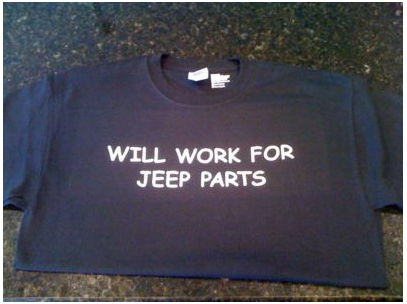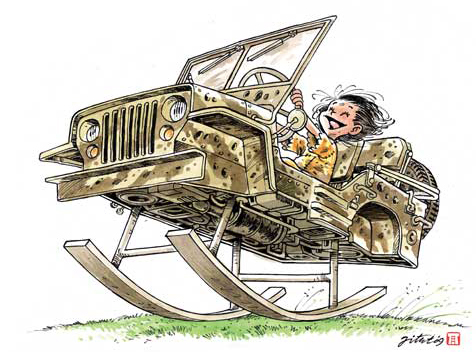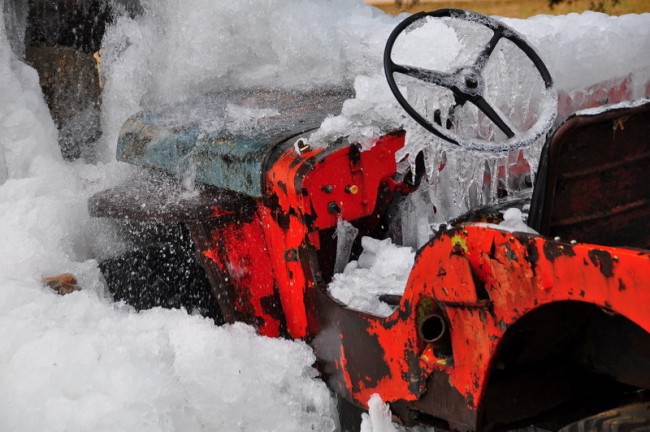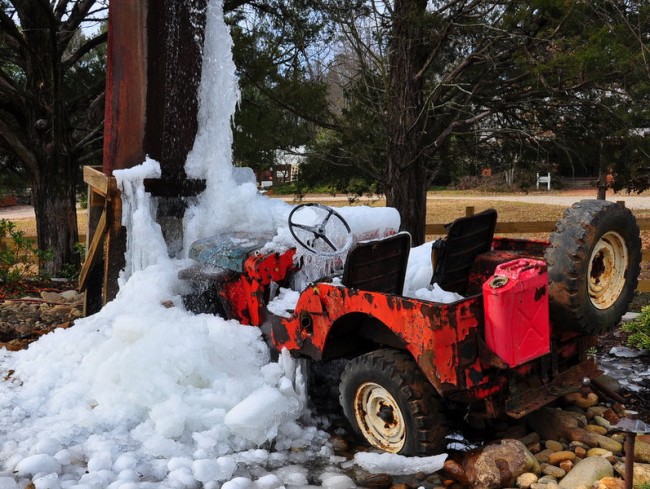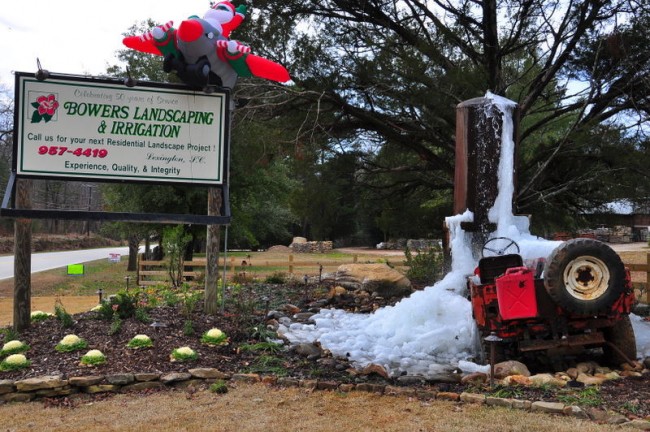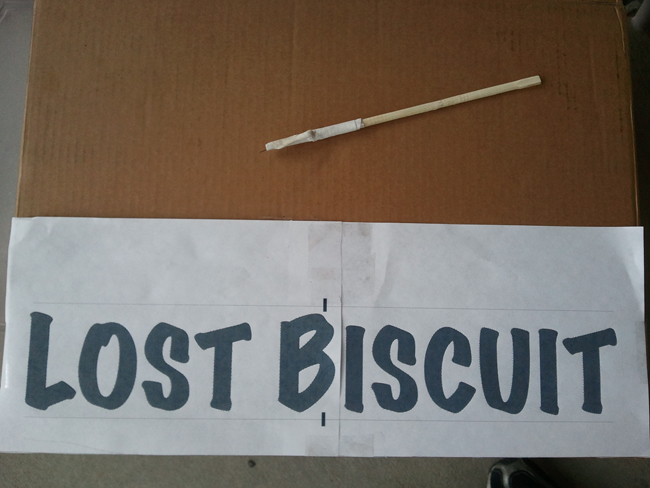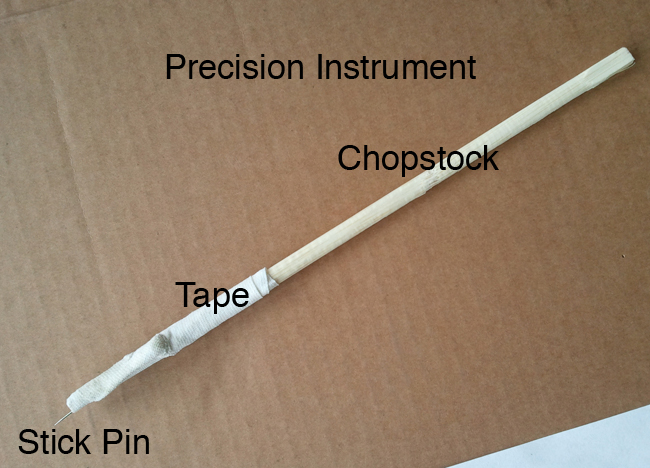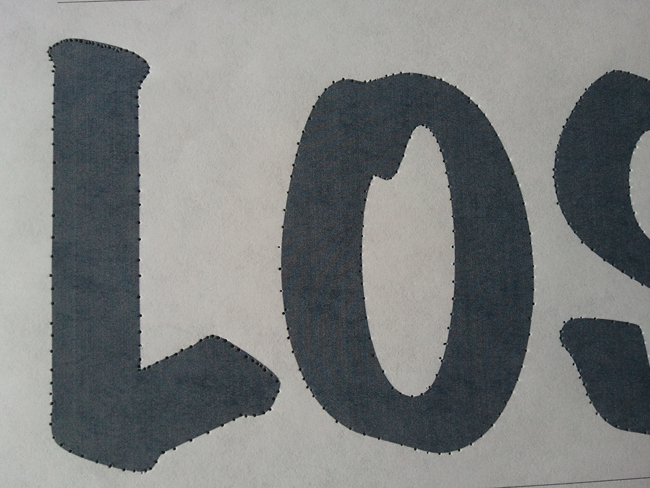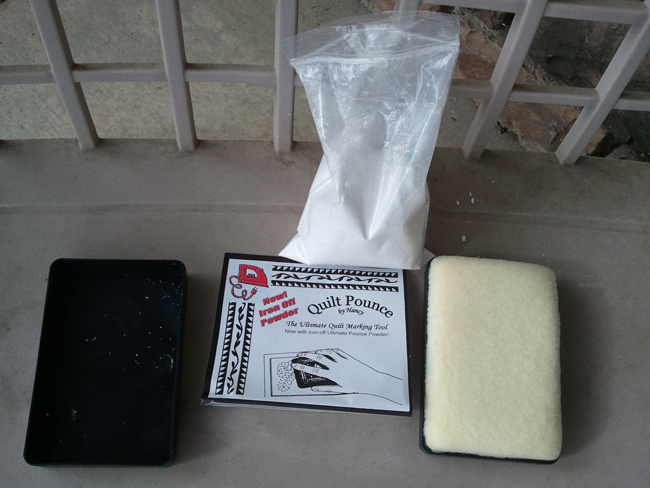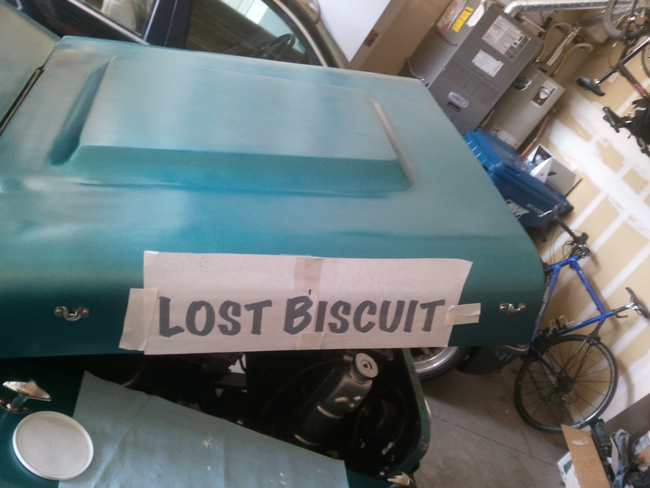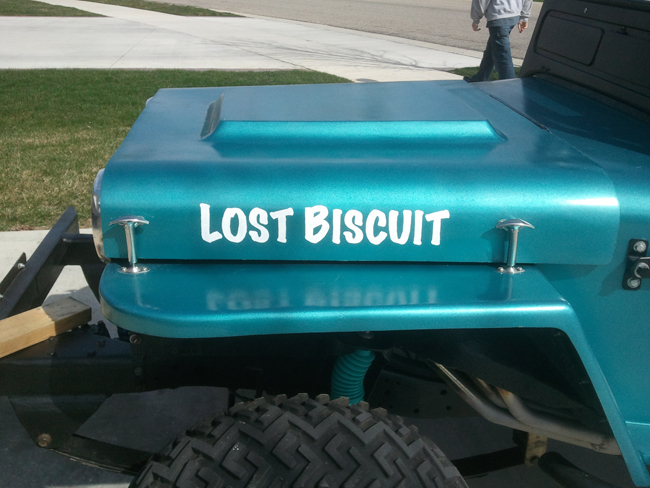Sadly, Keith filed a post-tornado special report today. He noted that while he, his wife Patsy and their son survived the storm as it blew through Chattanooga, his truck wasn’t so lucky. To make matters worse, he was just about to install a new starter and get it running, but until he completed that fix he kept it uninsured. So, place your antenna flag at half mast and wish Keith and his family well.
Features Research Archives
Early Rusted CJ-2A Images Heathcote, Ontario, Ca
I ran across these images today of a rusted CJ-2A. The photos were taken in 2008 by Dave Scottin Heathcote, Ontario, Canada, and posted on Flickr. Check out the governer throttle along with the 3 datatplates. I think this sitting in a junkyard or in an area with other rusted vehicles. If you scroll over the map on Flickr, you can see exactly where it is. I think there might even be some useful parts on this, too. Given the governor throttle, I wondered if it might have a rear PTO (Click on the 3rd photo and I think you will see the top of a cutoff PTO lever). You can even almost make out the serial number on the data plate (click on image 2).
MacArthur Museum of Arkansas Military History
The MacArthur Museum of Arkansas Military History in Little Rock, Ar, only exhibits one jeep (shown below), but they do have a variety of WWII Jeep photos in their archive, many of which include captions. Here are 8 of them. The photos are part of the Allison Collection of World War II Photographs, the captions of which come from the ACME wire service.
According to the Museum’s website, “James Allison, a sports writer working for the Houston Press, noticed that many photographs not printed in the daily newspaper were routinely discarded. He received permission to save these images, and by war’s end he had amassed a collection of more than 4,600 photographs. In August 1977, Allison donated his collection to the Arkansas Museum of Science and History”.
The FC-170 Power Hoe
Craig shared this unusual FC with me. If you missed this featured FC at theFCConnection, click on the image below to see and learn a little more about this custom FC-170 Power Hoe.
Russian’s and Americans in Korea, 1945
Alex spotted this jeep-as-gathering-spot courtesy of photographer George Silk and Life Magazine. The image was taken in October 1945. I wonder if the film shot by the cameraman on the left still exists.
Builds: 1944 MB from Hardscrabble Farm
Over a period of 9 years, between 1993 and 2002, this 1944 MB saw two major restorations. The first, done by owner Richard Grace, was a partial restore, returning the jeep to its MB roots. The second, done by Brian Mead, refined and corrected some of the previous shortcomings.
Click here to learn how the jeep went from this:
Into this:
A Jeep Wagoneer + a Ferrari = Jerrari • Top Speed: 140mph
The National Automobile Museum (the Harrah Collection) in Reno, Nevada, opened in 1989. Most of the collection is based on Bill Harrah’s (gaming pioneer and avid collector) automobile collection. Following Bill’s death in 1978, the Holiday Corporation bought Harrah’s Hotels/Casinos and more, including the collection. Then Holiday announced they were going to sell the cars. This ticked off Nevadans, so the governor stepped in and helped negotiate a donation of the cars by Holiday to a special non profit organization established for the purposes of a museum.
The museum was named among the top ten museums by Car Collector magazine, has been ranked as one of the best 16 car museums in the world by Autoweek, and has been selected the best Museum in Northern Nevada in Nevada Magazines’ Annual Readers Poll.
The collection appears to have only two jeeps. One is a slightly modded CJ-5; the other is a Wagoneer that was outfitted with a Ferrari engine and called a Jerrari.
Here is the Jerrari as photographed by RenoDesertFox from Flickr. Note the color of the first image is the correct color and the remaining images have had the colors tweaked by the photographer, but still show a good deal of detail.
1. Front view of the Jerrari (link to original)
2. Color has been tweaked. (link to original)
3. The Ferarri engine. (link to original)
4. Click on the image to more easily read the history. (link to original)
1. Here is the one image I have, again via RenoDesertFox, of the 1972 CJ-5 on display. (link to original)
The Plane called a Jeep by the USAAF
Admittedly, I know very little about planes. So, maybe I’m the only person who didn’t know that there was a plane that’s called a Jeep? It is the Curtiss AT-9 ‘Jeep’ plane. I discovered it while looking through some old photos at the McCarthur Museum in Arkansas (which I’ll feature in a couple days).
Here’s the photo I initially found. (see the last sentence in the caption). When I first saw the photo, I looked around to see where the jeep was sitting, but the little plane was blocking my view. Then it finally dawned on me that the little plane was the jeep.
Here’s a more recent photo from Wikipedia.
Drunk Tank MBs
I wish we had some better photos of these. These three photos were shot in 1949 by J.R. Eyerman in Shanghai, China (click on the pics to see the Eyerman credit) for Life Magazine. Interestingly, on this page the credit for the third photo is also, or mistakenly, given to Jack Birns. Also, according to this page, the third photo captures the last tug to leave Shanghai, with credit to Jack as well. According to the folks at G503, these jeeps were used by the shore patrol “to pick up mostly drunks in and was easy to wash out the puke.”
Chrismas Wagon
Here’s a good way to celebrate the holidays! You can see more holiday cars here.
The British Jago Geep (now Sandero) Kit
Pronounced “Jay-Go”, the Jago Geep was brought to my attention by Robert, who had never seen one either. So, I warmed up my googler this weekend to learn more about them.
According to this Sandero website, British Business Partners Geoff Jago and Richard Park launched the Jago Geep Kit car in 1971, making it one of the first kit cars in the UK. In the same way a dune buggy kit was sold in the US to be placed atop a VW Chassis, the Jago Geep Kit was initially intended to be place onto a Ford Anglia 105E and then later atop the Ford Escort MK1. There were five general variants of the Geep kit produced, but because they are all kits, it is doubtful that any are exactly alike once assembled and individual builder details were added.
In the 1980s, due to illness, Park sold the remainder of the company to Jago. In 1985, 25 specially manufactured kits were produced to celebrate the 25th anniversary of the Geep. Sometime in the 1990s, the company changed from the Geep model to the Sandero model, but I haven’t learned why. Most recently, and in the post below, a Series II Land Rover was used as the chassis. You can learn more at the Jago Owners Club.
From the 1984 through 1990 Jago produced a kit car called the Samuri, a four seat utility vehicle designed to fit atop the Ford Escort.
Here’s the nicest looking Jago Geep I’ve seen (so far):
Here’s a Jago Kit used as a drag jeep:
httpv://www.youtube.com/watch?v=395G0NXB1zo
See Dave’s Kit Car Here:
Here’s an image of the Jago Samuri:
A Quick Trip into the Hills
It was a sunny (finally), but cold day yesterday. So, Colter and I took a quick drive into the hills to smell the coming spring. Here are a couple snapshots.
The World’s Best Coffee Jeep
Here’s another reason to travel to Colombia. Sebastian’s father spotted this gem.
Sebastian writes, “My dad took these pictures today in Rio Negro, Antioquia, Colombia. I have seen Willys being used for almost everything in Colombia, but I never saw this before, a moving coffee shop. Look all the details, the art on the doors and on the tailgate, the speakers (stereo) on the roof, the coffee machine inside, the ketchup on the side, it has everything! The name displayed on the sides reads “Camperito del Café, lo mejor del mundo”, which roughly means the coffee jeep, the best of this world. No doubt about that.”
1960 CJ-3B Ambulance Spokane, Wa eBay
UPDATE: Back on eBay
(03/25/2011) This is cool! I found pics of a similar one on the CJ-3B Board from Macedonia.
“1960 Jeep CJ-3B Ambulance. It runs and drives. Imported from Turkey. Orange in color. doors still work. Needs fuel tank. Awesome and rare restoration project. Pictures tell it all. Email with any questions. Thanks”
Reader Builds: Some Jeeps out of Hawaii
UPDATE: I’m running short of time tonight, so here’s a post from a couple years ago.
Here’s Frank’s flattie and some friends of his who have flatties as well. The picture with multiple jeeps was from a run last October. The next time you are vacationing in Hawaii, keep an eye out for these good looking jeeps.
Unusual Willys Bugish thing from Cuba
Ori forwarded me this image take by Danny Koro during a visit to Cuba. You can see the ‘Willys’ stamp on the hood, which indicates the hood has been trimmed. It sure is unusual. You can see more info about the post here: http://www.carsforum.co.il/vb/showthread.php?t=372206
Eurpoean Junk Pile
I spotted this image at several sites, but the largest version I found was at edinburghnapiernews.com. I’m gonna guess, based only on the building in the right corner, that this pile of vehicles is somewhere in Europe. Strangely, this image is used as a header image for an article on the importance of recycling and freecycling. And I think the image is supposed to reinforce the importance of recycling and the problems of waste. I believe the irony of the use of this photo with the article is that these vehicles were in fact piled as a first step in their recycling process (for their reuse in steel).
Updated Verion of Lawrence’s Bellcrank Mod
Lawrence just finished adding his bearing mod to this newer bell crank for a customer. He’s been working on jeeps for decades. If you would like this done for your bell crank, let me know (d@ewillys.com) and I’ll provide his contact information.
Unusual MB found on Flickr
Here’s an unusual MB that I spotted on Flickr. I don’t remember seeing it anywhere else (but sometimes my memory isn’t all that good!).
A nice looking ‘Follow Me’ Slat Grille
Jeremy found these images as part of a great folder of jeep images touring Facebook. You can learn more about them at Brian’s Military Jeep site.
“Will Work For Jeep Parts”
Willys Jeep Song
HOG spotted this unusual ‘Willys Jeep’ song, which is a rewrite of Queen’s Bicycle Race song, over at Kaiser Willys Blog.
I Want a Rocking Jeep!
Alex spotted this illustration of a rocking jeep a long time ago. Thanks for sharing it. I think these would sell . . .
A Cold Winter!
This frigid CJ-2A suffered through consecutive days in the 20s in Columbia, South Carolina, this winter. It was snapped on January 7, 2010 and published at wunderground.com.
Pounced: Biscuit Finally Has Its Name
It was sometime around mid-summer of last year (maybe earlier) when I started the project to place ‘Lost Biscuit’ on the hood of my jeep. It took a little longer than expected, but I finally did it.
First I had to decide which font to use. Fortunately, I got some very helpful input along the way from Dexter (thanks) and eventually decided upon the Marker Felt font. Okay, that was pretty easy.
Now, how to get the name on the hood. After hmming and haaaing over how I wanted to attach the name (hand drawn, stickers, stencils, pay someone else … ), I finally decided I would do it myself using paint. But, I knew my freehand drawing and painting skills froze around the 2nd grade, so this wasn’t something I could improvise. Since I had no immediate solutions, I decided to put the project on hold (which explains the delay).
One day this past December I was watching American Restoration on the History Channel. The American Restoration show is a spinoff of sorts from the Pawn Stars show and follows various restoration projects from Ricks Restoration out of Las Vegas. In one of the episodes, called Buttered Up (you can view it here), Rick restores an old popcorn machine.
To repaint the front of the popcorn machine, the painter used a technique that dates back centuries called pouncing. Pouncing? My ears perked up!
Pouncing? Never heard of that. As usual, my computer was on my lap so I instantly googled pouncing. I learned,
Pouncing is where pounce — loose graphite or charcoal — is rubbed through a series of small holes punched in a paper pattern to transfer the design to an item to be decorated
Well, I thought that would work for Biscuit’s name. After some more research, I found out that quilters use pouncing for some stitch patterns. So, the next day I hit some quilt stores. As you can imagine, the conversation went something like this,
“Hi, I’m here because I want to paint a name on my jeep,” says I.
Blank stare from cashier, “what do you need?”
“I need stuff for pouncing” says I, remembering now that I probably had not shaved, maybe, not even showered, and most likely wasn’t quite dressed like customers they normally help (however, to my credit, I didn’t have on my garage jeans).
Another blank stare, “you want to do what?” I think she even had her finger ready to dial ‘9’ (and then ‘1’ ‘1’)
It turns out, not everyone knows what pouncing is, even at the quilt stores. Eventually, after visiting a couple quilt stores, I found what I needed (you will see my pouncing supplies in a picture below).
Here’s the synopsis of this project.
1. Design and Print the template. Then, since I didn’t have a good awl, I created my own awl out of tape, a chopstick and a long push pin.
2. Next, I attached the template to a piece of cardboard. Then, I poked holes around the outer edge of all the letters.
3. With the letters outlined, I tested out the template on different materials to make sure it worked. It turns out pouncing is pretty easy!
4. Selecting paint was the next step. So, I visited my local art supply store and explained to them what I wanted. They directed me to an Acrylic Titanium White Tube from Windsor Newton. Along with the paint, they also suggested an acrylic spray on sealer and finisher from Americana. I took the paint home and tested it on different materials. At first, I didn’t like it, because it wasn’t as smooth as the typical oil based house paint I had expected. Instead, it had texture like a canvas artist would want. But then, after staring at it a bit, I warmed to the texture, because it gave the name a hand generated feel.
5. Yesterday, with the weather a little warmer, it was time to paint the name. I got out my template, my paint, and my pouncing supplies. I taped the template to the hood and prepared to pounce.
Over the course of my tests, the technique I found most successful for pouncing was not tapping the pouncer, but rather dragging it slowly across the holes. This kept the paper from popping up and blurring the dots underneath.
The pouncing equipment consists of a pouncer with a ‘handle’ on one side and a soft side on the other. There’s also a plastic container that can hold pounce. Lastly, there is the white chalk.
6. Now it’s time to paint. I put three coats on each side. This image was taken after the first coat.
This is after three coats.
There is still some small edges that need cleaning up. Once I do that, I’ll spray it and hopefully that will protect it!
